Weekly Dose of Optimism #166
American Banking, Google DeepMind takes on Cancer and Fusion, Levin on Aging, California Forever, Nuclear, Stern on Kushner, Telephathy Tapes S2, Potter x Stripe
Hi friends 👋,
Happy Friday and hello from sunny Berkeley, California, where Roots of Progress is hosting the 2025 Progress Conference this weekend. We are going to have a lot to talk about. This is one of the most jam-packed in the history of the Dose.
Last week, Dan predicted that with me at the keyboard, the Dose was about to get a lot longer. He was right; this is a rare TRIPLE BONUS week, and we still had to leave things out. Big thanks to Aman and Sehaj for scouring the internet to help put together the Dose.
In my defense, there were just a lot of great things happening this week. We have big news out of the world of AI: OpenAI is now allowing erotica in ChatGPT (jk) a new Google model generated a novel cancer hypothesis that humans have validated! We have big news out of the world of American Finance. We have a new Michael Levin theory on aging. We have Nuclear News. And we have plans for a new city in California. On top of all that, we have the best profile/podcast/book trio of the year.
So much happened this week that we didn’t even include Anduril’s unveiling of EagleEye (or Palmer’s Rogan appearance), Lockheed’s autonomous Black Hawk, SpaceX completing the V1 and V2 era of Starship, Daylight’s $75M to decentralize the grid, Brian in Ramp’s Office, or Joel Mokyr winning the Nobel in Economics “for having explained innovation-driven economic growth.” What a week for the optimists.
Let’s get to it.
Today’s Not Boring is brought to you by… WorkOS
Most Enterprise AI Apps Fail. Here’s What Works.
Most AI apps never make it past the prototype phase because of compliance gaps, security issues, and weak infrastructure. This guide outlines how successful teams move quickly from idea to launch.
WorkOS gives you the APIs and enterprise features like SSO, SCIM, RBAC, and Audit Logs so your team can go from prototype to production fast.
(1) JPMorganChase Launches $1.5 Trillion Security and Resiliency Initiative to Boost Critical Industries
“Our security is predicated on the strength and resiliency of America’s economy. America needs more speed and investment. It also needs to remove obstacles that stand in the way: excessive regulations, bureaucratic delay, partisan gridlock and an education system not aligned to the skills we need.” - Jamie Dimon
Jamie Dimon is either running for President or he should be.
This week, his bank, JPMorgan Chase, committed to investing $1.5 trillion to boost critical industries. The money, a mix of $10 billion of equity and a whole lot of loans, will go to everything from shipbuilding to batteries to spacecraft to nuclear energy. Basically, if we’ve written about a category in Not Boring, JPMorgan Chase wants to invest in it.
Part of this, I’m sure, is just being a good corporate citizen. But JPMorgan Chase is a large bank responsible for a lot of shareholders’ and depositors’ money. The real reason that the bank is investing so much in critical industries is because they are where growth will come from in the coming decades. It’s just good business. JPMorgan Chase is just getting a little more front-footed about underwriting categories that other large financial institutions have been more reluctant to touch.
It is a good time to be building a Vertical Integrator.
(1a) US Approves Erebor
via TBPN
Erebor will focus on lending to hard technology and defense companies as part of its broader mission to support American industrial capacity.
This is the fastest conditional approval for a depository institution de novo application in 25 years.
A really good time. Palmer Luckey’s new bank, received conditional approval for its chartering from the Office of the Comptroller and Currency earlier this week. It plans to lend to hard tech and defense companies, and perhaps no one is in a better position to underwrite them than Luckey, Joe Lonsdale, and the team they’re assembling.
There is a lot of work to do to bring manufacturing capacity back to the US. Loans are a good starting point. But change is clearly afoot. Three more stories from just this week tell the tale:
(2) Google’s Cell2Sentence Scale 27B Model Generates Novel Validated Hypothesis
This announcement marks a milestone for AI in science. C2S-Scale generated a novel hypothesis about cancer cellular behavior and we have since confirmed its prediction with experimental validation in living cells. This discovery reveals a promising new pathway for developing therapies to fight cancer.
We’ve said it in the Dose before and we’ll say it again: Google DeepMind continues to crush all comers when it comes to building models that do useful things in the physical world. First, there was AlphaFold, then GNoME for materials discovery, Gemini Robotics, GraphCast and GenCast for weather forecasting, and Genie 3 for real world simulation.
Now, Google DeepMind, along with Yale University, has released C2S-Scale, which “generated a novel hypothesis about cancer cellular behavior and we have since confirmed its prediction with experimental validation in living cells.” This is AI forming its own hypotheses, which human researchers validated in the lab. As John Coogan explained, “It’s a ‘conditional amplifier,’ meaning it boosts the immune signal. This turns ‘cold’ tumors — tumors invisible to the body’s immune system — ‘hot,’ so they can be eliminated from the map.”
This is not a cure for cancer, but it’s certainly an early proof point that AI may play an important role in finding one. Go Demis.
(2b) And fusion!
But wait, there’s more. Yesterday, Google DeepMind also shared that they are working with Commonwealth Fusion Systems (CFS) to help accelerate fusion. “TORAX is our open-source plasma simulator allowing CFS to run millions of virtual experiments to test plans for their tokamak, SPARC,” GDM tweeted, “Using reinforcement learning, we’re now rapidly identifying the most efficient paths for it to generate more power than it consumes - a landmark achievement known as crossing ‘breakeven.’”
Man, if Google could productize anything anymore, they would be a force to be reckoned with.
(3) Aging as the Result of Loss of Goal-Directedness
Léo Pio-Lopez, Benedikt Hartl, and Michael Levin in Advanced Science
In the context of this model: 1) Aging emerges after developmental goals are completed, even without noise or programmed degeneration; 2) Cellular misdifferentiation, reduced competency, communication failures, and genetic damage all accelerate aging but are not its primary cause.
For the third week in a row, just when we think AI is making all of the cool discoveries, Michael Levin comes off the top rope to put human researchers back on top.
Levin, along with Léo Pio-Lopez and Benedikt Hartl, released a paper with a computational model of multicellular morphogenesis using Neural Cellular Automata evolved to form and maintain a target body plan. In their framework, aging appears naturally after developmental goals are met, even without external noise or programmed decay.
Aside from being a beautiful metaphor for all sorts of things, the paper is important because it suggests that we may be able to stop or reverse aging by reprogramming our tissue’s control software.
More generally, I think the fact that Levin has been able to produce so much important work so quickly points to the fact that he’s struck a very rich vein in his work on bioelectricity and morphogenesis while the rest of biology focuses on molecules. It pays to be contrarian and right.
(4) California Forever Submits Plans for the Next Great American City
Jan Sramek
Master-planned expansions of our cities have created some of the world’s most beloved neighborhoods. From the Manhattan Plan of 1811 which expanded Manhattan north of Houston Street, to Barcelona’s Eixample (“extension”), magic happens when you connect the new to the old.
California Forever, the new city being designed and built from scratch in Solano County, hit a big milestone this week by submitting “detailed plans for the next great American city, an hour north of Silicon Valley, including: Solano Foundry, America’s largest manufacturing park, Solano Shipyard, our largest shipyard, and walkable neighborhoods for 400,000 Californians.”
Affordable homes, walkable neighborhoods, factories, and a shipyard. They even mentioned working with Monumental Labs to design the type of beautiful stone building some claim we’ve forgotten how to build.
Let’s take a second to pause here. We’re four stories in and we’ve already talked about curing cancer, solving fusion, reversing aging, and building new cities, backed by fresh capital to finance it all. Can you feel the momentum?
(5) Another Big Week for Nuclear
We’re proud to announce we have selected the first Manhattan Project site in Oak Ridge, Tennessee as our location to build the world’s first factory to mass-produce portable nuclear generators.
We’re even building nuclear, that symbol of our inability to harness the miracle technology at our disposal to power a better world.
This week, Radiant announced plans to locate its first portable nuclear generator mass manufacturing facility in Oak Ridge, Tennessee, home of Oak Ridge National Lab.
The US Army also announced the Janus Program, “a next-generation nuclear power program designed to provide resilient, secure and reliable energy, strengthening warfighter readiness and combat lethality.”
These two things our related. In my Deep Dive on Radiant, I highlighted a point that Doug made: “Over 55% of US soldier casualties in the two Iraqi conflicts are from ambushed convoys. And convoys move ammo, water, and fuel. So if you could put a reactor in one of these locations, you completely remove all those fuel shipments, you save tens of thousands of lives.”
Nuclear isn’t only safe, it’s life-saving. These are two steps towards letting it do its thing.
BONUS: The New World: Joshua Kushner, Thrive Capital, and the American Dream
Jeremy Stern for Colossus

If you’re on the internet, you’ve probably read this excellent Jeremy Stern profile of Thrive’s Josh Kushner. If you haven’t, go read it now.
Double BONUS: The Telepathy Tapes is Back from the Dead
Ky Dickens: And then there was this third, almost higher realm he’d talk about.
Dr. Eben Alexander: Angelic choirs provided yet another portal, a light portal up into this brilliant core realm. I witnessed as I ascended to these levels, all of four dimensional space time collapsing down. Time flow in that realm is not identically matched to time flow in this realm.
But bottom line is in the core realm, all paradoxes, all of the dualities of this world, male, female, good, bad, dark, light, et cetera, everything’s resolved into pure oneness in that level. And that’s where I acknowledged the oneness of my very conscious awareness with that infinitely powerful and loving God force and coming to see as many near-death experiences describe that were never separate from that. But I was always told going into the core, “You’re not here to stay. You’ll be going back. We’ll teach you many things,” not in words, because nothing in that realm was words. It was pure conceptual.
Last year, I began The Return of Magic with an odd confession: “On December 1st, I started listening to The Telepathy Tapes. By December 2nd, about halfway through Episode 9, I believed in God.”
Since then, I’ve gone even deeper. I’ve meditated every day since writing that essay. I’ve read a lot. And I’m more convinced that the world is much more magical than science has given it credit for over the past 300 years or so. I’ll probably write something about this again soon.
In the meantime, I highly recommend listening to this first episode of season two. To start the season, Ky Dickens leaves the “spellers” and speaks to others who have had similarly extraordinary experiences, starting with those who have had near-death experiences. The quote above is from a formerly materialist Harvard neuroscientist who had his own near-death experience and came away convinced that our souls live on after our death. There are other, equally spine-tingling stories throughout the episode.
These topics can seem very far out there and woo, but there’s a compelling body of evidence in support of the ideas, and if true, they’re the most important and undervalued ideas in the world. Worth an hour of your time this weekend, at least.
TRIPLE BONUS: The Origins of Efficiency
By Brian Potter with Stripe Press
Stripe Press released its newest book and one I’ve been looking forward to for a very long time this week: Brian Potter’s The Origins of Efficiency. I still need to read it (I lugged the hardcover with me to California) but based on the hundreds of thousands of words of Brian’s writing I’ve read, and Stripe Press’ exquisite taste, I can recommend this book by its cover.
If you’re interested in how things get built or in building things yourself, go buy it. As Brian writes, “To understand why the construction industry was so resistant to efficiency improvements, and why it never seemed to get cheaper to construct buildings, I needed to understand how, specifically, things get cheaper to produce over time. This book is the fruit of that effort.”
If you want a little Brian Potter primer, check out the conversation I had with him a few months ago on Hyperlegible:
Have a great weekend y’all.
Thanks to WorkOS for sponsoring. Support the Dose and make your product enterprise-ready by checking out WorkOS.
We’ll be back in your inbox next week.
Thanks for reading,
Packy

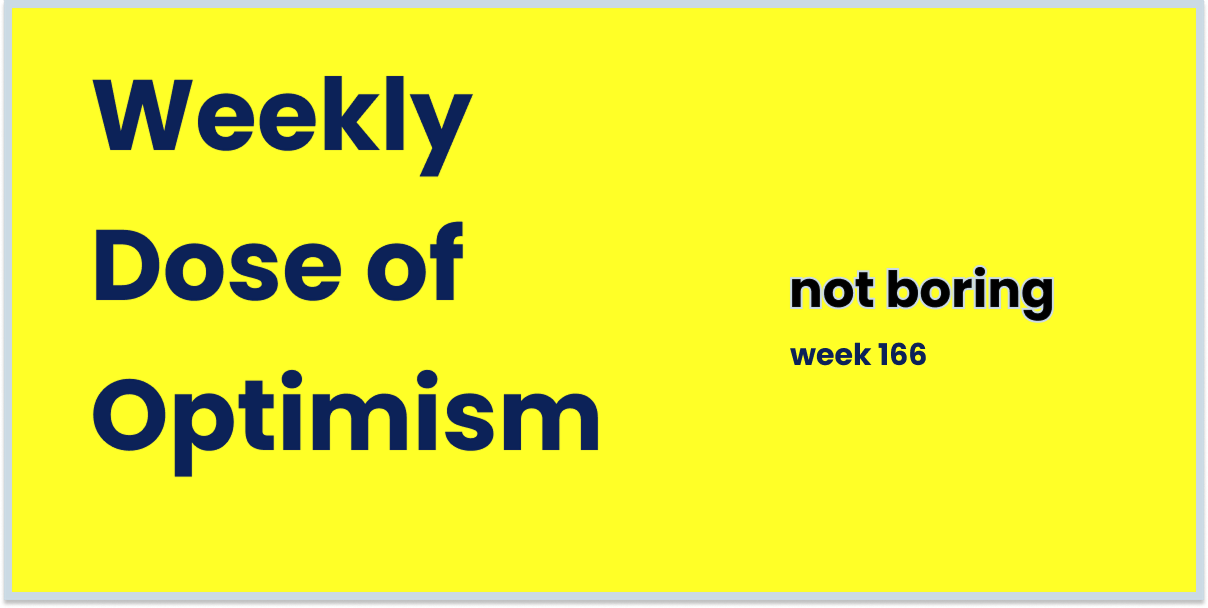
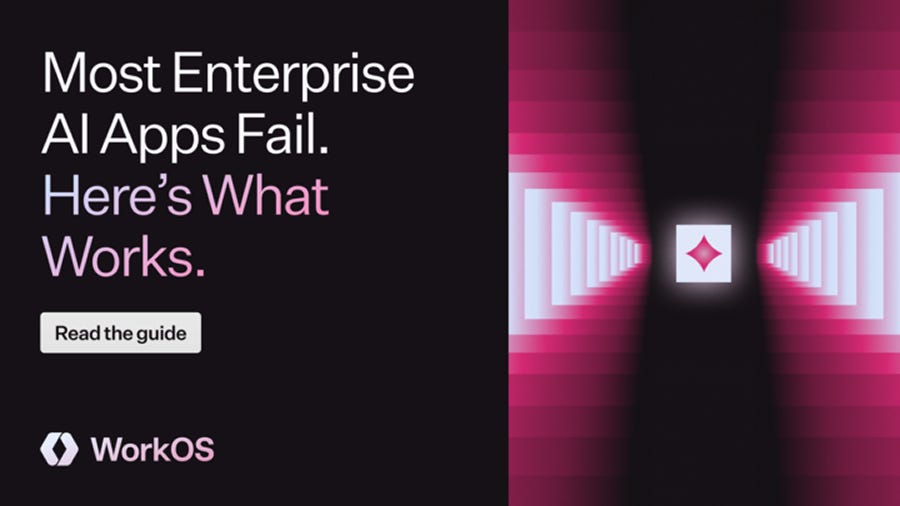
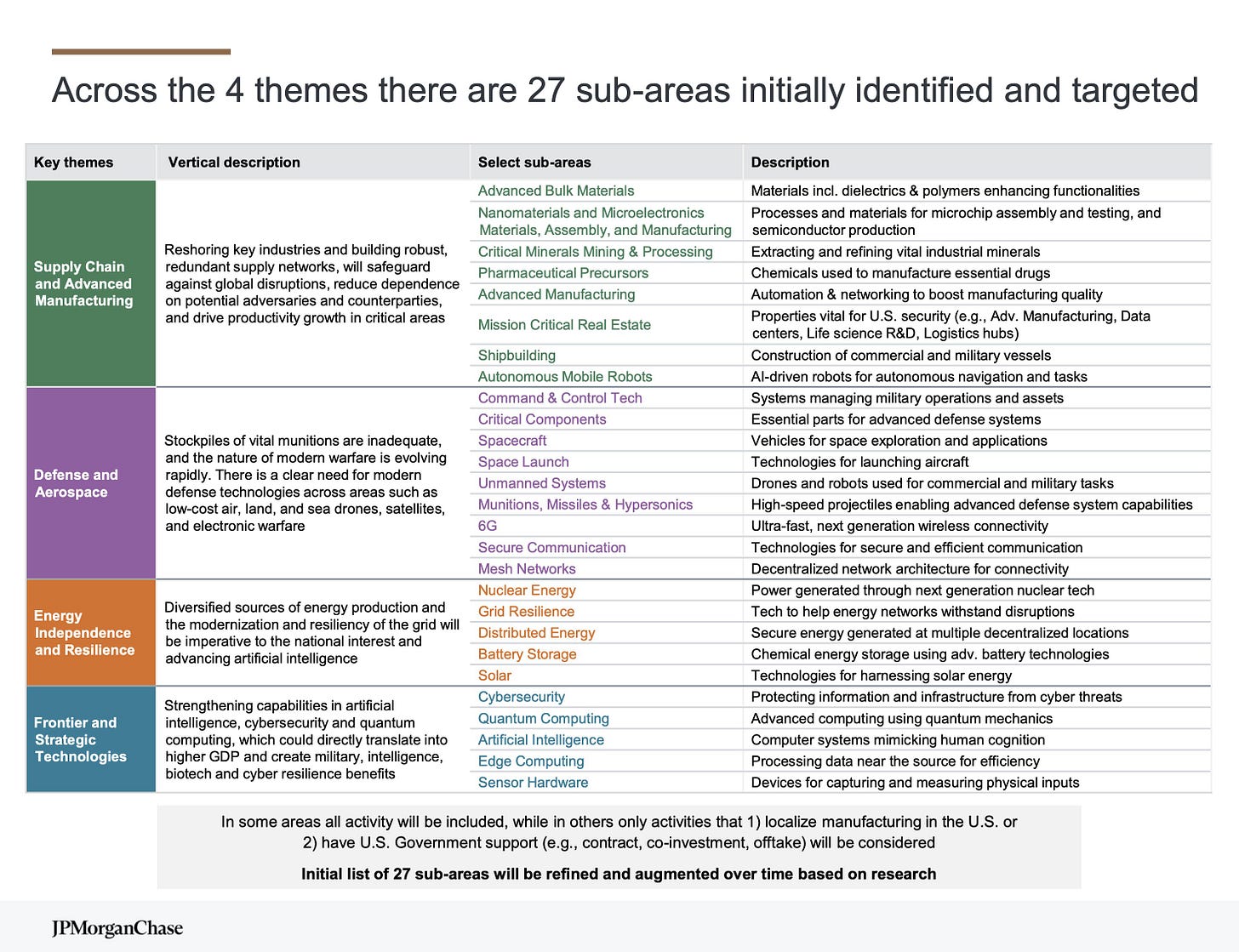

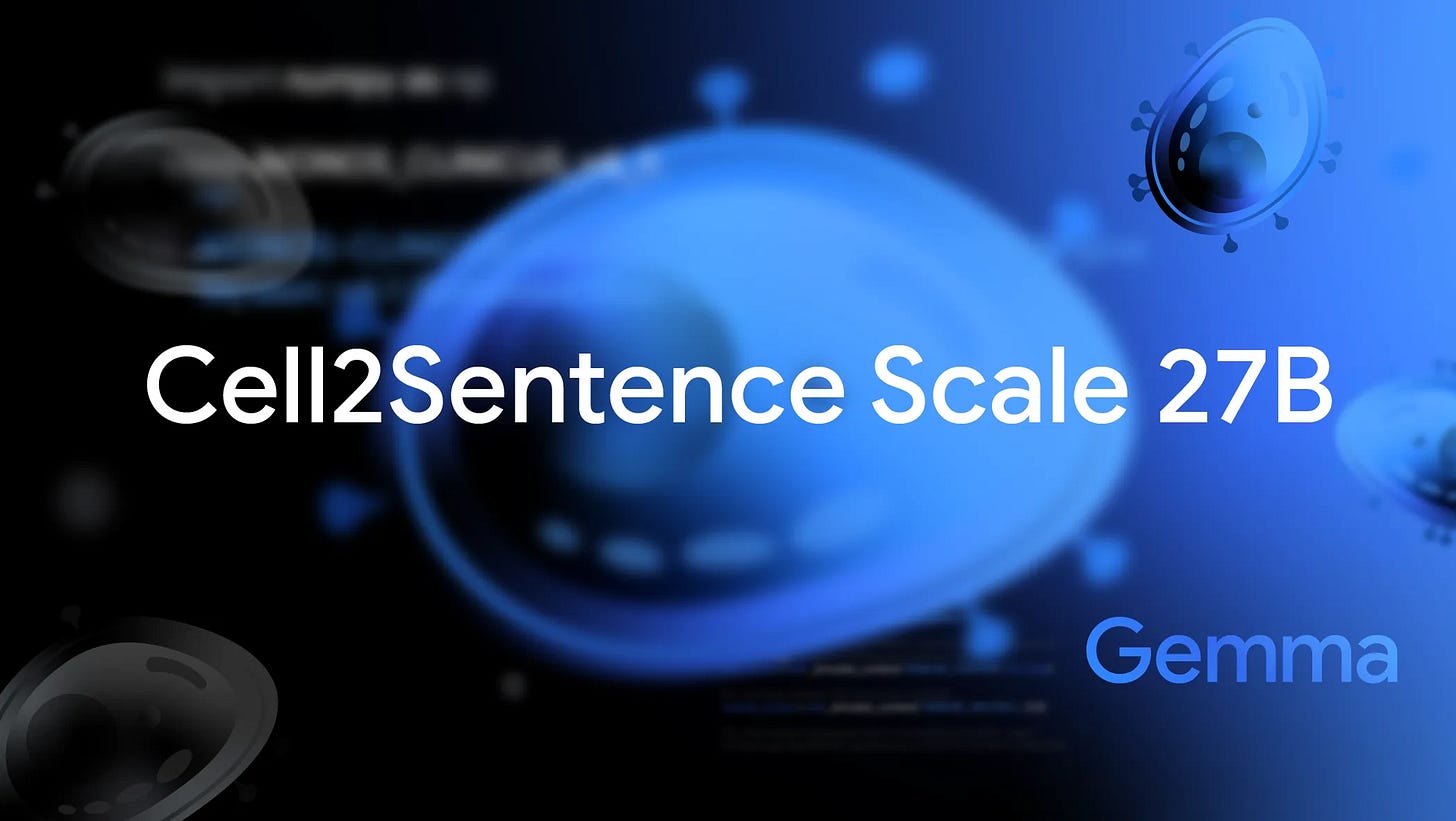
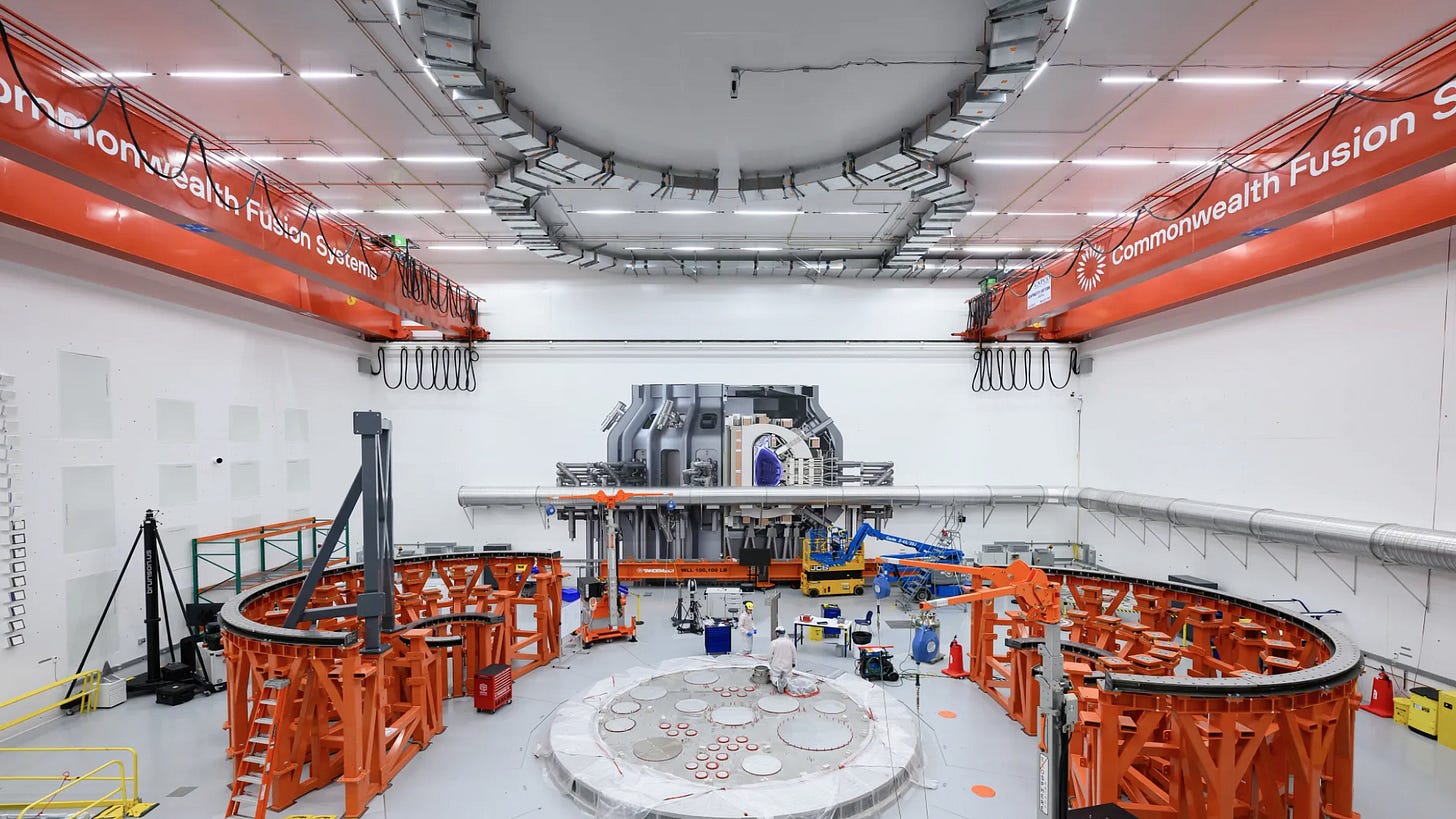
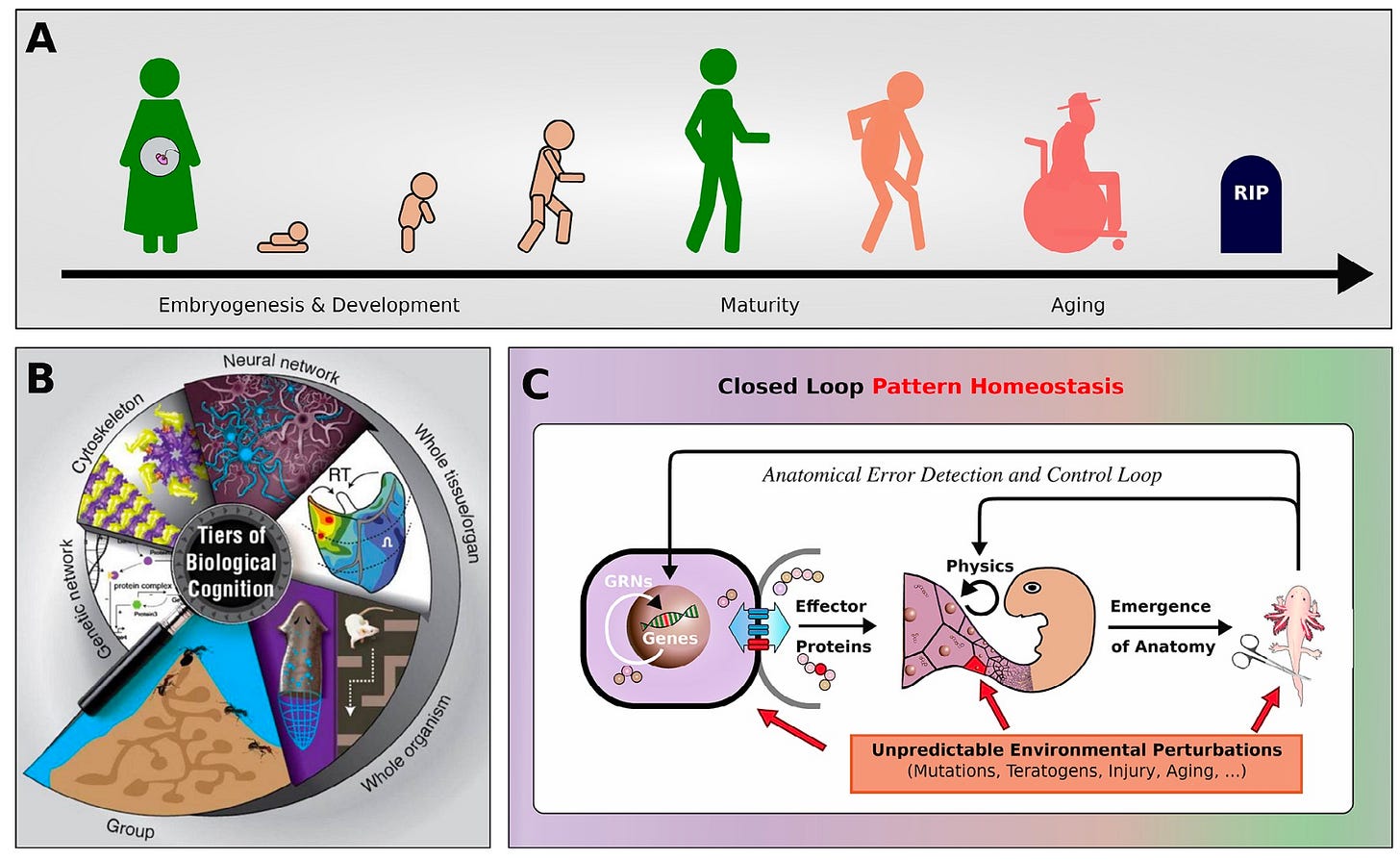

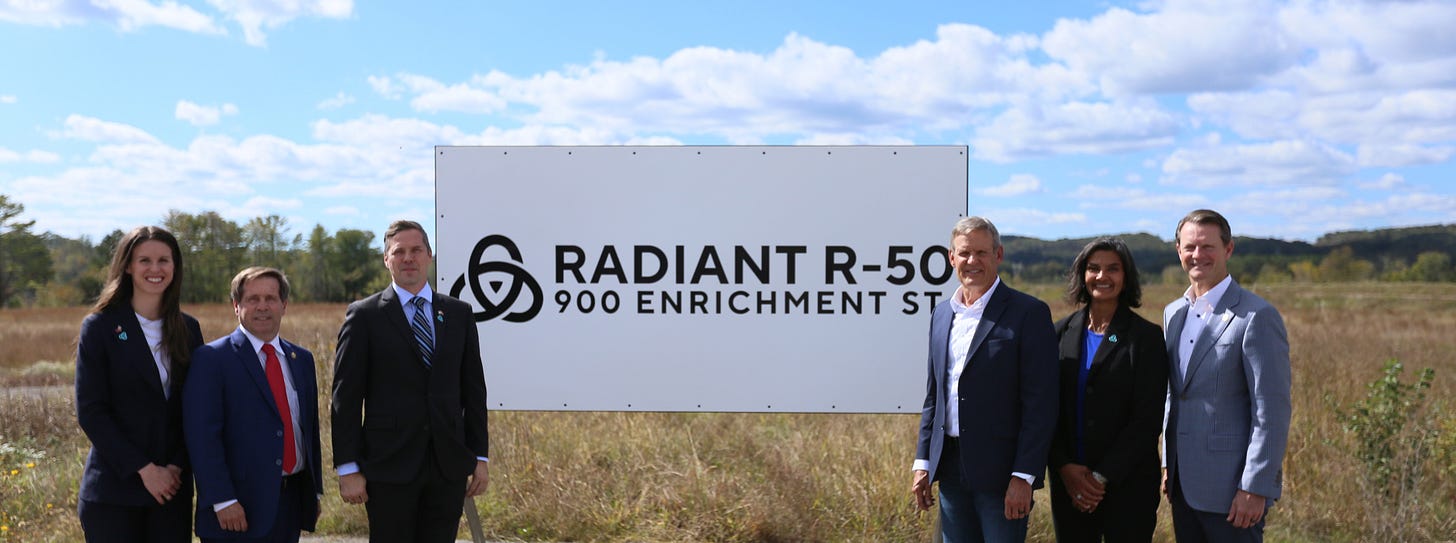
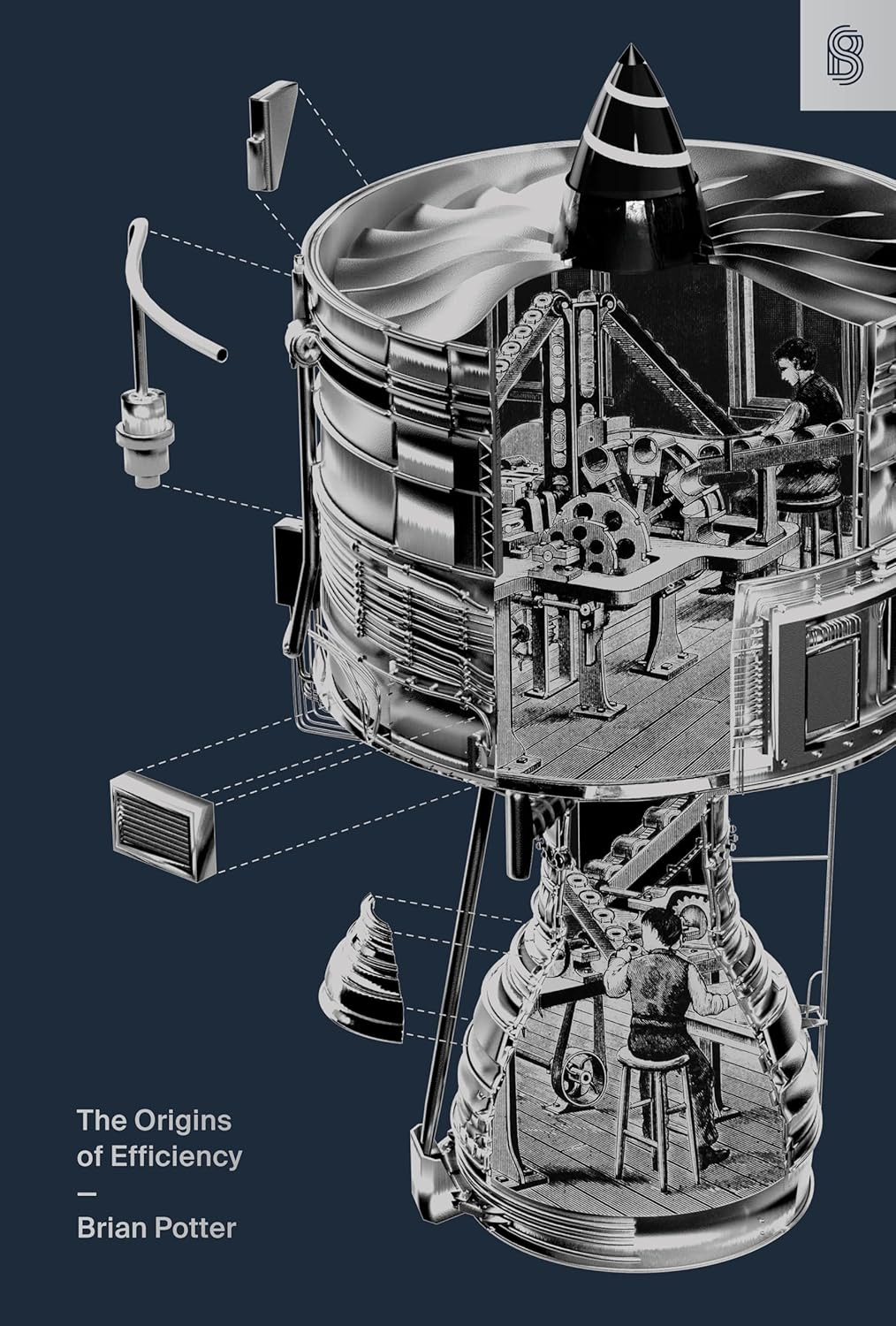
nice job on your own- without the discipline of create dan... the xtras were worth the extra key strokes-- ps- does this mean you bought the book?
my fave this week is Ky Dickens coming back... cannot wait to listen... positivity and hope... that's the perfect ingredients..